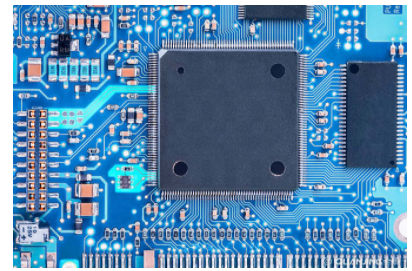Choosing PCBmaterials for RF high power applications
Although there are some high-power PCB applications that have nothing to do with base stations, most high-power PCB applications are related to base station power amplifiers. When designing such high-power RF applications, multiple considerations need to be made. This article focuses on the application of PCB-based base station power amplifiers, but the basic concepts discussed here are also applicable to other high-power applications.
Most high-power RF applications have thermal management issues, and good thermal management needs to consider some basic relationships. For example, in relation to loss, when the signal power is input into the circuit, the circuit with higher loss will generate higher heat; the other is related to frequency, the higher the frequency, the more heat will be generated. In addition, the increase of heat in any dielectric material will cause a change in the Dk (dielectric constant) of the dielectric material, that is, the temperature coefficient of dielectric constant (TCDk). As the loss changes lead to changes in circuit temperature, changes in temperature lead to changes in Dk. This Dk change caused by TCDk will affect the performance of the RF circuit and may affect system applications.

For the heat loss relationship, a variety of different materials and corresponding PCB characteristics can be considered. Sometimes, when designers select low-loss materials for PCB applications, they may only consider the dissipation factor (Df or loss tangent). Df is only the dielectric loss of the material, but there are other losses in the circuit. The total loss of the circuit related to the radio frequency performance is the insertion loss. The insertion loss consists of four losses, which are the sum of the dielectric loss, conductor loss, radiation loss and leakage loss.
Circuits using extremely low loss materials with a Df of 0.002 and very smooth copper foil will have relatively low insertion loss. However, if the same circuit with the same low-loss material is still used, but the use of electrolytic copper (ED) with large roughness instead of smooth copper will result in a significant increase in insertion loss.
The surface roughness of the copper foil will affect the conductor loss of the circuit. It should be clarified that the surface roughness related to loss is the surface roughness of the copper foil at the copper-dielectric interface when the laminate is processed. In addition, if the medium used in the circuit is thinner, the copper foil surface will be closer. At this time, the surface roughness of the copper foil will have a greater impact on the insertion loss than a relatively thick medium.
For high-power RF applications, thermal management is usually a common problem, and it is more advantageous to choose a laminate with low Df and smooth copper foil. In addition, it is usually a wise thing to choose a laminate with high thermal conductivity. High thermal conductivity will help and effectively transfer heat from the circuit to the heat sink.
The frequency-heat relationship shows that assuming the same RF power at two frequencies, more heat will be generated when the frequency is increased. Taking some thermal management experiments conducted by Rogers PCB as an example, it is found that the heat rise of a microstrip transmission line loaded with 80w RF power at 3.6 GHz is about 50°C. When the same circuit is tested with 80w power at 6.1 GHz frequency, the heat rise is about 80°C.
There are many reasons why the temperature increases with increasing frequency. One of the reasons is that the Df of the material will increase as the frequency increases, which will lead to more dielectric loss, and ultimately lead to an increase in insertion loss and heat. Another problem is that conductor loss increases with frequency. The increase in conductor loss is almost due to the fact that the skin depth decreases with increasing frequency. In addition, as the frequency increases, the electric field will become denser, and there will be greater power density in a given area of the circuit, which will also increase heat.
Finally, the TCDk of a material has been mentioned many times in this article. It is an inherent property of the material whose Dk changes with temperature, and it is a material characteristic that is often overlooked. For power amplifier circuits, there are 1/4 wavelength lines in the design for matching networks, and these networks are very sensitive to Dk fluctuations. When Dk changes significantly, the 1/4 wavelength matching will shift, resulting in a change in the efficiency of the power amplifier, which is very undesirable.
In short, when selecting a high-frequency material for high-power RF applications, the material should have low Df, relatively smooth copper foil, high thermal conductivity, and low TCDk. When considering these material properties and end-use requirements, many trade-offs need to be made. Therefore, when selecting materials for high-power RF applications, it is always wise for designers to contact their material suppliers.